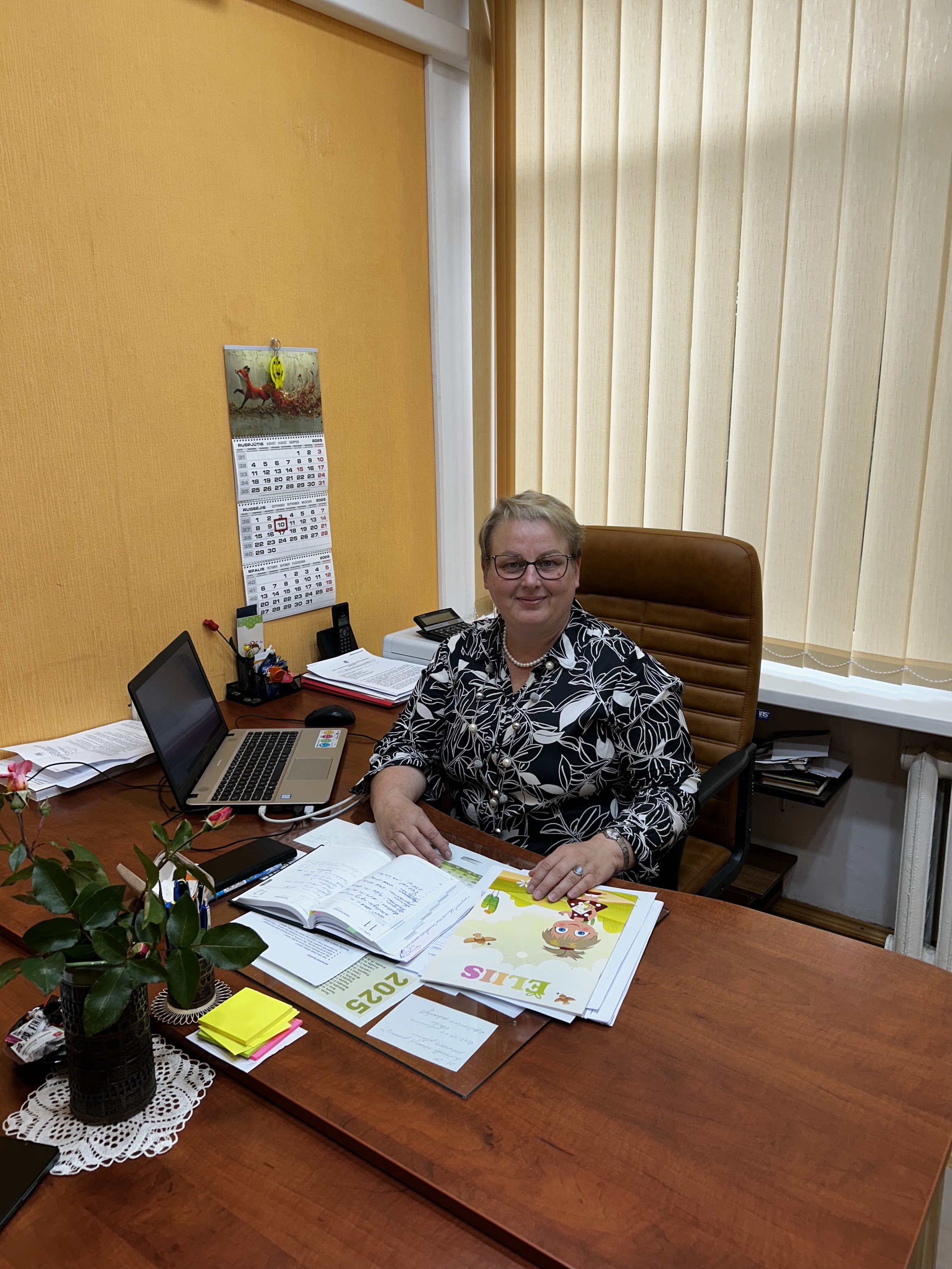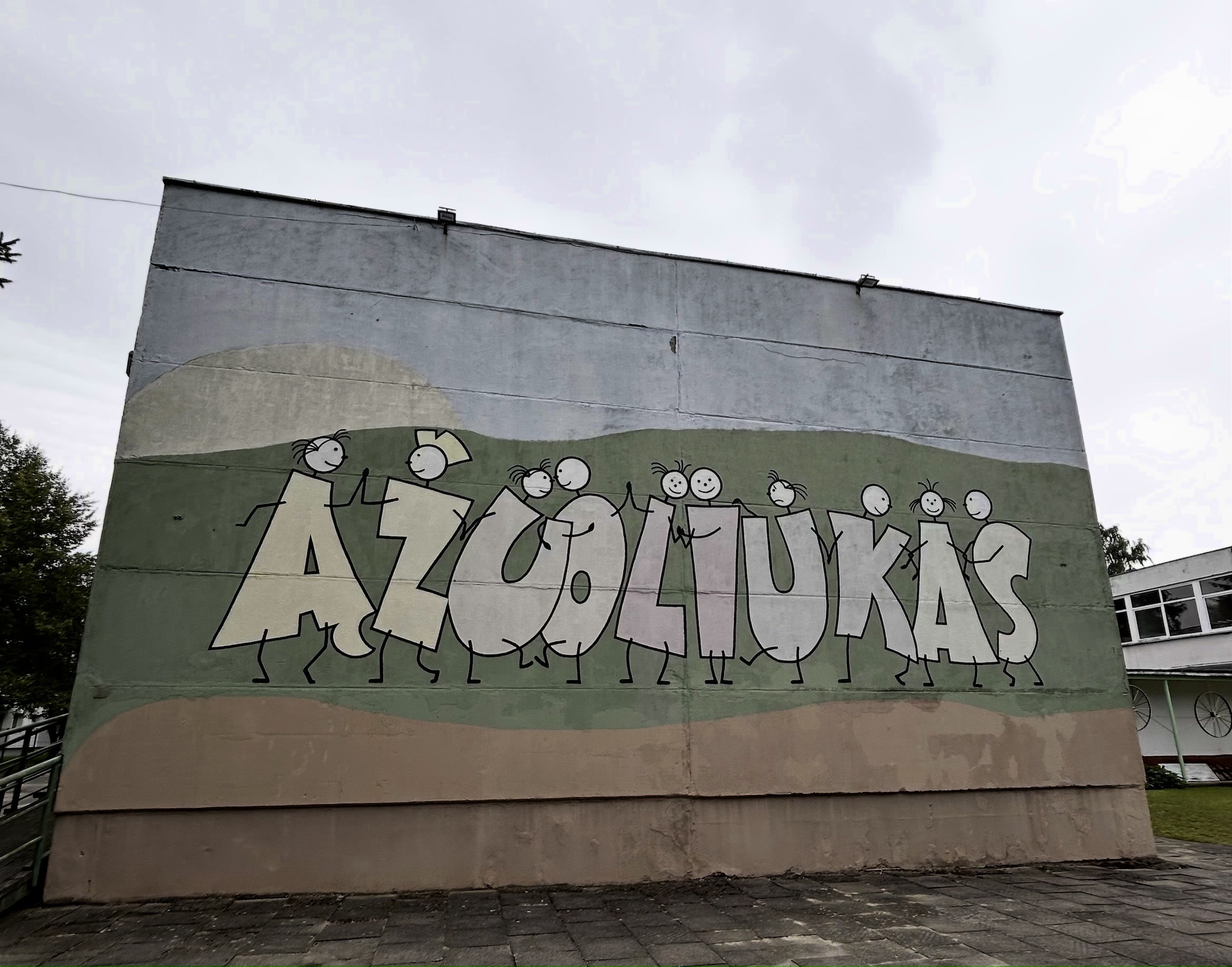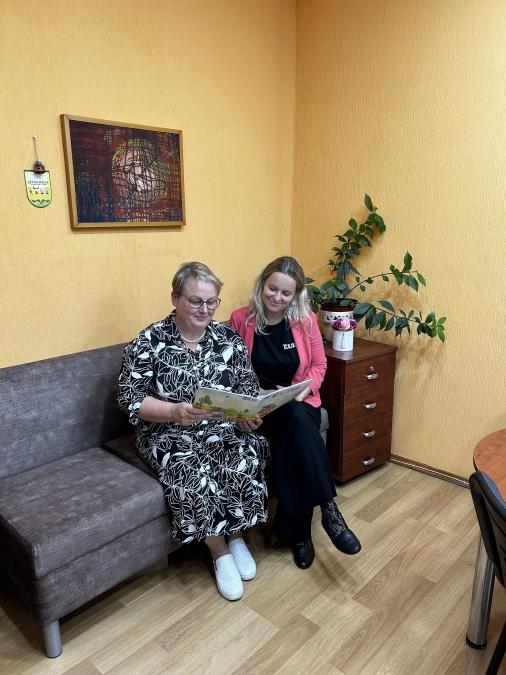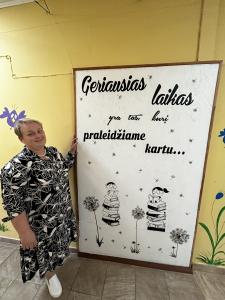Interview with Ineta Grudzinskaite, Director of Kybartai Nursery-Kindergarten “Ąžuoliukas”
This time, the ELIIS team visits Kybartai, where we talk with Ineta Grudzinskaite – the long-time director of Kybartai Nursery-Kindergarten “Ąžuoliukas.” She has led the institution for more than 18 years and shares her experiences on changes, challenges, the impact of technology, communication with parents, and the subtleties of child development.
The Path of a Leader
Can you tell us about your path to becoming a director? What brought you to “Ąžuoliukas”?
– I have been working at the nursery-kindergarten for 18 years. I came to this institution with previous experience – I had previously worked as a deputy director at a secondary school, which gave me exposure to formal education. This helped me confidently take on the role of director at Kybartai Nursery-Kindergarten “Ąžuoliukas,” which at that time still had primary classes. Due to demographic changes, in 2019 we became a preschool institution, and since then we have focused entirely on early childhood education. Since this September, we have been working according to the updated preschool curriculum. I actively contributed to updating the curriculum myself – I led trainings where I shared my experience, knowledge, and insights not only in our district but also in other municipalities – Alytus and Druskininkai.
Perhaps the main motivation is the desire to share knowledge with teachers so they can work more creatively with children and keep up with educational changes and new societal trends. The main task of preschool educators is to educate the person, and early childhood development is crucial in shaping a child’s personality, values, independence, and ability to learn.
What qualities do you consider most important for a leader?
– Responsibility, diligence, and patience. A leader must set an example, keep promises, assist, explain, and know how to motivate the team. It is important to be present, work with staff to find solutions to challenges, and, if needed, sit down at the computer to explain technical or other procedural issues. The main goal is to motivate, encourage, and help staff grow as responsible and competent specialists.
What motivates you the most in this work?
– The greatest inspiration is the opportunity to share knowledge with teachers and student support specialists and to see how the entire community grows together. Communication and collaboration with teachers, children, and their parents or guardians are very important to me. This work is not just a profession – it is service to people, a desire to contribute to children’s development, provide knowledge, and assist parents while maintaining educational quality.

Challenges and Technology
What has been the greatest challenge in your career?
– The biggest challenge is motivating the school community to ensure both individual and team development of every staff member. Sometimes employees think they already know everything, but in education, knowledge must be constantly updated. What was relevant a week ago may no longer be relevant today, so it is necessary to systematically seek new methods, approaches, and tools to engage the learners.
Another challenge is technology. Especially during the pandemic, the entire community had to learn and adapt to ICT tools. Not everything worked perfectly the first time, but through trial and error, we implemented the ELIIS diary as an information-sharing tool in the institution and learned to work remotely. It required a lot of patience but also brought many benefits – today, digital tools have become a daily routine.
What systems and innovations do you use in the kindergarten?
– We use the ELIIS system, which has greatly simplified our work. We can monitor each child’s attendance, plan activities, share information with parents, and track children’s growth and progress. In preschool education, we use interactive boards, tablets, 3D learning tools, QR codes, and interactive books. Through ICT tools, children can see how insects and ants move in nature, how water flows, or how birds chirp. This helps implement educational content more easily and helps children understand the world better while fostering their curiosity.
Changes in Child Development
How has child development changed over the years?
– Every year brings new challenges because children are different each year – more inquisitive, curious, and more inclined to technology. On one hand, this is encouraging, but we also notice challenges: children have a limited active vocabulary, find it harder to formulate detailed answers, and do not always know how to express their emotions, feelings, and thoughts. Children grow up in a world of technology – they quickly master devices, but live communication and emotional connection can suffer. Therefore, the kindergarten becomes a place where we strive to provide comprehensive education, a safe environment, recognizing each child’s strengths, less developed abilities, and deliberately encouraging their growth.
Community and Parents
How do you communicate with parents? Is it easy to involve them in the educational process?
– Involving parents is very important, though not always easy. Some think that teachers will take care of everything, so we strive to involve them in celebrations, projects, events, sports activities, exhibitions, or competitions, helping them observe and understand their child’s progress and participate more meaningfully in the child’s development process. Such experiences become wonderful moments of togetherness, bringing children, parents, and teachers closer. Besides festive activities, we organize sports events and car-free bike days, which allow parents to see how their children behave in the group and how teachers work, strengthening community spirit. Parents also actively use the ELIIS system – they can see photos of their children, weekly plans, and activities, which makes it easier for them to engage in daily education.
Changes in the Teacher’s Role
How has the teacher’s work changed today?
– It has changed a lot. Children’s attention is harder to capture, so innovative methods and tools are needed. Inclusive education is implemented, outdoor educational spaces are used, and more exploration, experimentation, and other experiential learning approaches are applied. Teachers must constantly improve, paying attention to children’s needs, abilities, and interests. Educators must also listen to each child and their family, plan flexible learning conditions, and help children become communicative, flexible thinkers, creative, confident, caring for themselves and others, sensitive to cultural and social diversity, and successful learners. Today, knowledge alone is not enough – creativity, empathy, technological literacy, and psychological readiness are also required.
How do you support and motivate teachers?
– The most important thing is to notice efforts, celebrate results, and encourage. A collaborative team of teachers and student support specialists can reflect more effectively and solve challenges. Different perspectives can encourage creative solutions to common problems, as we learn together and help one another. When a teacher sees the result of their work and says, “I did it,” that is the greatest recognition.
Looking to the Future
How do you see the future of early childhood education?
– Previously, parents would start taking children to kindergartens at two or three years old, but now we also have younger children in groups. Life challenges often prompt families to bring their children to early childhood education, one of which is balancing motherhood and career.
Preschool institutions provide a safe and cozy environment where children learn daily through play, discover new things independently, and develop responsibility. Children have the opportunity to work individually, in pairs, in small groups, or with family.
What advice would you give someone aspiring to become a kindergarten director?
– Be curious, inquisitive, and able to communicate and collaborate. And most importantly – understand that a leader comes not just to lead, but to serve people.

In Conclusion
This conversation with Ineta Grudzinskaite reveals how much heart, patience, and effort it takes to work with the youngest children. The director’s experience shows that education is not just about knowledge, but also about community, motivation, communication with families, and the ability to adapt to constant changes.
We thank the director of Kybartai Nursery-Kindergarten “Ąžuoliukas,” Ineta Grudzinskaitė, for sincerely sharing her experience and insights. We also thank teacher Violeta Kričinienė, whose work on the ELIIS user guide has made teachers’ everyday work easier and helped create a better learning environment.
Key Takeaways:
The role of a leader is to serve people. A true leader not only gives directions but also supports, motivates, and helps their team grow.
Technology has become essential. From the ELIIS system to interactive tools, today’s work with children is unimaginable without them.
Teachers must constantly improve. Children are different than before, so educators must seek new methods for teaching and learning.
Parents are key partners. A child’s education is successful only when the kindergarten and family communicate and collaborate consistently and systematically.


